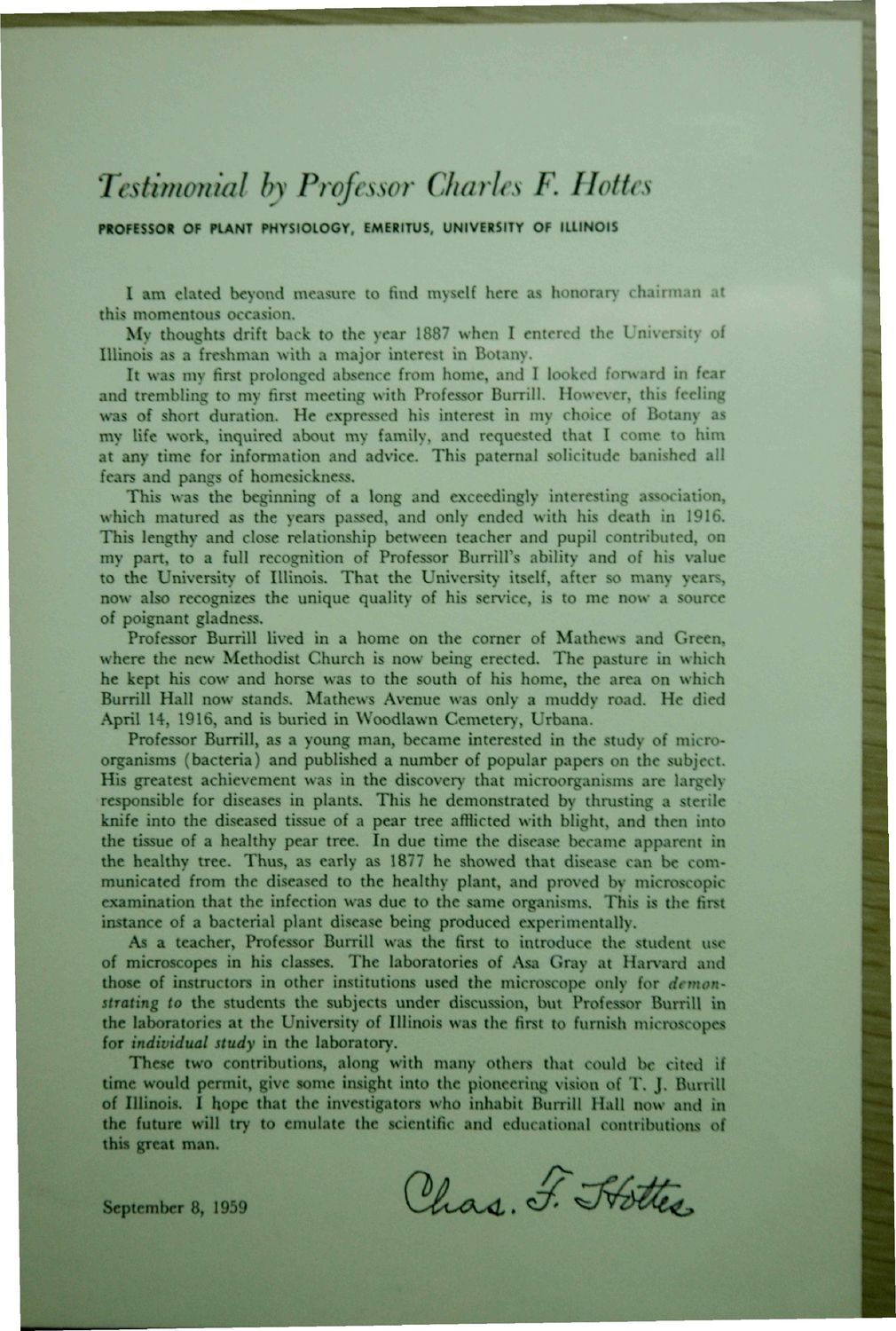| |
| |
Caption: Dedication - Burrill Hall
This is a reduced-resolution page image for fast online browsing.

EXTRACTED TEXT FROM PAGE:
Testimonial by Professor Charles F. Holies PROFESSOR OP PLANT PHYSIOLOGY. EMERITUS, UNIVERSITY OF ILLINOIS I am elated beyond measure to find myself here as honorary chairman at this momentous occasion. My thoughts drift back to the year 1887 when I entered the University of Illinois as a freshman with a major interest in Botany. It was my first prolonged absence from home, and I looked forward in fear and trembling to my first meeting with Professor Burrill. However, this feeling was of short duration. He expressed his interest in my choice of Botany as my life work, inquired about my family, and requested that I come to him at any time for information and advice. This paternal solicitude banished all fears and pangs of homesickness. This was the beginning of a long and exceedingly interesting association, which matured as the years passed, and only ended with his death in 1916. This lengthy and close relationship between teacher and pupil contributed, on my part, to a full recognition of Professor Bun-ill's ability and of his value to the University of Illinois. That the University itself, after so many years, now also recognizes the unique quality of his service, is to me now a source of poignant gladness. Professor Burrill lived in a home on the corner of Mathews and Green, where the new Methodist Church is now being erected. The pasture in which he kept his cow and horse was to the south of his home, the area on which Burrill Hall now stands. Mathews Avenue was only a muddy road. He died April 14, 1916, and is buried in Woodlawn Cemetery, Urbana. Professor Burrill, as a young man, became interested in the study of microorganisms (bacteria) and published a number of popular papers on the subject. His greatest achievement was in the discovery that microorganisms are largely responsible for diseases in plants. This he demonstrated by thrusting a sterile knife into the diseased tissue of a pear tree afflicted with blight, and then into the tissue of a healthy pear tree. In due time the disease became apparent in the healthy tree. Thus, as early as 1877 he showed that disease can be communicated from the diseased to the healthy plant, and proved by microscopic examination that the infection was due to the same organisms. This is the first instance of a bacterial plant disease being produced experimentally* As a teacher, Professor Burrill was the first to introduce the student use of microscopes in his classes. The laboratories of Asa Gray at Harvard and those of instructors in other institutions used the microscope only for demonstrating to the students the subjects under discussion, but Professor Burrill in the laboratories at the University of Illinois was the first to furnish microscopes for individual study in the laboratory. These two contributions, along with many others that could be cited if time would permit, give some insight into the pioneering vision of T. J. Burrill of Illinois. I hope that the investigators who inhabit Burrill Hall now and in the future will try to emulate the scientific and educational contributions of this great man. September 8, 1959 \^US€KAL. & ^/Vz%^
| |